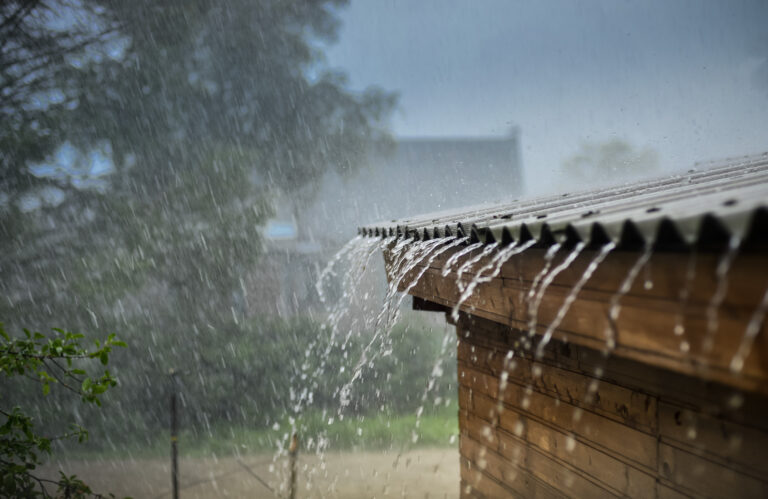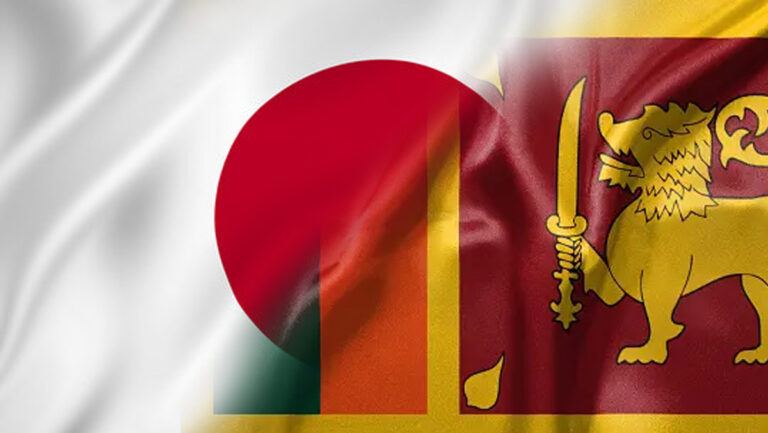November 09, Colombo (LNW): Health and Mass Media Minister Dr Nalinda Jayatissa has directed officials to fast-track the recruitment of nursing lecturers in response to a serious staffing gap across nursing colleges nationwide.
At present, only 220 lecturers are serving in nursing education institutions, although the approved cadre is 395 — leaving a shortfall of 175.
The shortage has reportedly placed mounting pressure on training programmes and affected the smooth functioning of several nursing schools.
The issue was taken up during a meeting held with the Nursing College Principals’ Association, where Minister Jayatissa stressed the urgent need to strengthen teaching capacity in the sector.
He noted that the deficit in qualified lecturers could have long-term implications for healthcare delivery, particularly at a time when the demand for trained nurses continues to rise.
Following the discussions, the Minister instructed ministry officials to resume stalled recruitment processes without further delay. He further ordered that pending examinations and selections for eligible candidates be completed within the next two months to ensure that new appointments can be made promptly.
Health Minister Orders Immediate Recruitment to Tackle Shortage of Nursing Lecturers
Central Bank Tightens Vehicle Loan Rules with New Lending Caps
November 09, Colombo (LNW): The Central Bank of Sri Lanka has introduced stricter borrowing limits for vehicle financing, directing banks and financial institutions to enforce new maximum loan-to-value (LTV) ratios from 8 November onwards.
Under the revised framework, loans or leasing facilities for the purchase or use of commercial vehicles must not exceed 70 per cent of the vehicle’s value, while facilities for private vehicles will now be capped at 50 per cent. The move forms part of the Central Bank’s broader macroprudential measures aimed at ensuring responsible lending and curbing excessive credit exposure in the motor sector.
The Central Bank, acting in its role as the country’s Macroprudential Authority, has issued these directions to licensed commercial and specialised banks, finance companies, and registered leasing establishments. Officials said the latest decision follows a comprehensive review of market conditions and risk factors linked to vehicle financing.
The new structure replaces the more detailed four-tier categorisation introduced in July, which had set separate ratios for cars, three-wheelers, and other vehicle types. The simplified classification now consolidates all non-commercial vehicles—including cars, vans, and three-wheelers—under a single category.
According to the Central Bank, the revision is expected to promote greater financial discipline among lenders and borrowers, reduce speculative demand in the motor market, and align credit growth with the country’s overall economic stability objectives.
Financial institutions have been advised to ensure full compliance with the new lending limits and to update their internal credit evaluation processes accordingly.
Maldivian Coast Guard Seizes Sri Lankan Vessel Carrying Massive Drug Haul
November 09, Colombo (LNW): In a major maritime operation, the Maldivian Coast Guard has apprehended six Sri Lankan fishermen aboard a vessel allegedly transporting a large quantity of narcotics, including nearly 300 kilogrammes of heroin and crystal methamphetamine.
Authorities confirmed that the interception took place following a joint intelligence-sharing effort, with crucial information provided by the Sri Lanka Navy leading to the successful seizure.
The vessel was reportedly operating in international waters when it was tracked and stopped by Maldivian naval units.
Preliminary investigations suggest that the illicit cargo may be connected to a well-known Sri Lankan drug trafficker identified by the alias “Dehibale Malli,” who is believed to have links to several transnational smuggling operations in the Indian Ocean region.
Security officials in both countries are said to be coordinating further inquiries to uncover the broader network behind the shipment, which is suspected to be part of a larger trafficking route spanning from South Asia to the Maldives.
The detained crew and the confiscated narcotics have been handed over to Maldivian law enforcement authorities for further questioning, while regional naval forces have reportedly heightened surveillance to prevent similar smuggling attempts in the coming weeks.
Sri Lanka’s Apparel Exporters Warn of Losing Edge Amid Growing Delays at Colombo Port
November 09, Colombo (LNW): Sri Lanka’s leading apparel exporters have sounded the alarm over worsening inefficiencies at the Colombo Port, warning that persistent delays and outdated systems are driving regional trade away from the island and threatening the country’s hard-earned reputation as a reliable exporter.
In a strongly worded statement issued on Friday, the Joint Apparel Association Forum (JAAF) said that while Sri Lanka continues to grapple with operational shortcomings, neighbouring economies have surged ahead with modernised, fully digital port systems.
“India’s new Vizhinjam Port, along with established hubs such as Singapore and Dubai, now offer faster vessel turnaround times, real-time cargo tracking, and streamlined digital coordination,” the association noted. “As a result, transshipment volumes that once passed through Colombo are being redirected elsewhere.”
According to JAAF, several international shipping lines have recently opted to skip Colombo altogether—sometimes announcing the change just days before docking—forcing cargo such as fabric, zippers, buttons, and other garment accessories to be offloaded at alternate ports or delayed by several days.
“These disruptions are disastrous for manufacturers working under strict delivery timelines,” JAAF Secretary-General Yohan Lawrence said. “Even a short delay can trigger missed deadlines, contractual penalties, or the need to airfreight goods at significantly higher costs.”
The group attributed much of the problem to structural inefficiencies within port operations, including slow container transfers between terminals, inadequate digital integration, and poor coordination among multiple port agencies.
JAAF has urged the government to prioritise modernisation, calling for “comprehensive operational reform” that includes digitised pre-clearance systems, improved cargo visibility, and unified inter-terminal coordination to restore Colombo’s competitiveness.
The government has yet to respond to the concerns raised by the industry body.
This latest setback comes just weeks after Sri Lankan exporters were hit by a new 20 per cent tariff imposed by the United States, one of the country’s largest apparel markets. Although the rate was reduced from an earlier proposal of 44 per cent, officials had hoped the adjustment would keep Sri Lanka competitive with other key exporters such as Bangladesh and Vietnam.
Industry stakeholders now fear that without urgent port reforms, even that advantage may quickly erode, dealing another blow to one of Sri Lanka’s most vital export sectors.
Nationwide Drive to Distribute Half a Million Coconut Plants Launches
November 09, Colombo (LNW): A large-scale national effort to boost household-level coconut cultivation and support rural livelihoods is set to begin today (09).
The initiative, which aims to distribute 500,000 coconut saplings to families across the island, is expected to make a meaningful contribution to both poverty reduction and agricultural self-sufficiency.
The official launch ceremony will be held under the patronage of Minister of Plantations and Community Infrastructure Samantha Vidyaratne and Deputy Minister of Rural Development, Social Security and Community Empowerment Wasantha Piyathissa.
Proceedings are scheduled to begin at 10 a.m., with several senior government officials and community representatives in attendance.
The project stems from a recent Memorandum of Understanding signed between the Ministry of Rural Development, Social Security and Community Empowerment and the Ministry of Plantations and Community Infrastructure.
The collaboration seeks to revitalise coconut cultivation while providing tangible benefits to families in rural and semi-urban areas.
Under the scheme, 250,000 families across the country will each receive two young coconut plants free of charge, with the exception of residents in the five districts within the Northern Coconut Triangle—Jaffna, Kilinochchi, Mullaitivu, Mannar, and Vavuniya—where separate development programmes are already in operation.
Officials estimate that the initiative will lead to the establishment of nearly 8,000 acres of new coconut plantations nationwide, enhancing local coconut production over the coming years.
Beneficiaries were identified through the Praja Shakthi National Programme Committee and endorsed by regional coordination bodies. The aim is to empower families to meet their own household coconut requirements directly from their home gardens, reducing dependency on market supply and strengthening community resilience.
2025 A/L Exams Tomorrow: Final Preparations Complete, Authorities Brace for Weather Challenges
November 09. Colombo (LNW): All necessary preparations are now in place for the 2025 G.C.E. Advanced Level examinations, which are scheduled to begin tomorrow (10), according to the Department of Examinations.
This year’s exams will take place at 2,362 centres across the country and will run until December 05. A total of 345,525 students are expected to sit the papers, including 246,521 from schools and 94,004 private candidates.
To ensure the exams proceed without disruption, the Department has also established 325 coordination centres and 32 regional collection points. Officials said these measures are intended to strengthen logistical efficiency and maintain the integrity of the process.
In anticipation of possible adverse weather, the Disaster Management Centre (DMC) has teamed up with the Department of Examinations to implement a joint contingency plan.
The initiative is designed to guarantee that students affected by heavy rain, floods, or other natural events are still able to attend or complete their examinations without undue hardship.
Candidates who may face difficulties due to extreme weather are encouraged to reach out via the 117 hotline or the Department’s dedicated number, 1911.
DMC Director Pradeep Kodippili confirmed that further coordination support is available through the National Examination Emergencies Operations Unit, which can be reached on 0113 668 026, 0113 668 032, 0113 668 087, or 0113 668 119.
These lines, managed from the DMC’s Emergency Operations Room, will remain active throughout the examination period to respond swiftly to any emergencies.
Afternoon showers at most parts of Island: Fairly heavy falls above 75 mm expected (Nov 09)
November 09, Colombo (LNW): Showers or thundershowers will occur at most parts of the island after 1.00 p.m., the Department of Meteorology said in its daily weather forecast today (09).
Fairly heavy falls above 75 mm are likely at some places in Uva, Southern, Sabaragamuwa and Central provinces and in Ampara district.
Showers may occur in Western and Southern provinces and Puttalam district in the morning too.
The general public is kindly requested to take adequate precautions to minimise damages caused by temporary localised strong winds and lightning during thundershowers.
Marine Weather:
Condition of Rain:
Showers or thundershowers will occur in the sea areas off the coast extending from Puttalam to Pottuvil via Colombo, Galle and Hambantota. Showers or thundershowers may occur at a few places in the other sea areas around the island during the evening or night.
Winds:
Winds will be North-westerly in direction and speed will be (20-30) kmph.
State of Sea:
The sea areas around the island will be slight.
Temporarily strong gusty winds and very rough seas can be expected during thundershowers.
Social Security Contribution Levy on Vehicles to Be Collected at Import or Manufacture Stage from April 2026
The government has proposed a change in the method of collecting the Social Security Contribution Levy (SSCL) on vehicles, shifting the point of taxation to the time of import or manufacture and sale, while exempting it at the after-sales stage, President Anura Kumara Dissanayake announced in Parliament.
The President explained that the decision was made after observing irregularities in the collection of the levy during vehicle sales. The new system aims to ensure better tax compliance and administrative efficiency in collecting the levy.
Accordingly, the revised process for charging the Social Security Contribution Levy on vehicles will take effect from April 2026, he stated.
Prime Minister Meets Nippon Foundation Chair Yohei Sasakawa to Discuss Education and Social Inclusion Initiatives
The Nippon Foundation Chair Yohei Sasakawa paid a courtesy call on Prime Minister Dr. Harini Amarasuriya at Temple Trees on Thursday (6), where discussions focused on strengthening cooperation in education, accessibility, and social inclusion.
Prime Minister Amarasuriya expressed her appreciation for Mr. Sasakawa’s second visit to Sri Lanka and commended The Nippon Foundation’s longstanding commitment to supporting vulnerable communities.
Sasakawa briefed the Prime Minister on the outcomes of the recent Leprosy Conference, attended by President Anura Kumara Dissanayake, and outlined the Foundation’s ongoing projects in Sri Lanka—particularly those aimed at empowering persons with disabilities and supporting students with special needs.
Highlighting the work of the Sri Lankan School of Prosthetics and Orthotics, Sasakawa proposed upgrading the institution to university level with Government collaboration. The Prime Minister responded positively and instructed the Ministry of Education to assess the proposal’s feasibility.
Dr. Amarasuriya also praised the ‘100 Schools Project’ implemented by The Nippon Foundation in the Northern Province, reaffirming her Government’s dedication to advancing inclusive education and social empowerment. She further acknowledged the resource constraints faced by some initiatives and conveyed gratitude for Japan’s continued assistance in addressing them.
Japan’s Ambassador to Sri Lanka, Akio Isomata, reaffirmed Japan’s commitment to enhancing bilateral cooperation, especially in areas promoting social welfare, inclusivity, and education.
Both parties expressed their shared commitment to deepening collaboration among Sri Lanka, Japan, and The Nippon Foundation to advance inclusive development and strengthen people-to-people ties.
The meeting was attended by Yohei Sasakawa, Ambassador Akio Isomata, Second Secretary Ryo Takaoka, and Shota Nakayasu, Secretary to The Nippon Foundation’s Chairman.
Representing the Sri Lankan side were Prime Minister’s Secretary Pradeep Saputhanthri, Additional Secretary Sagarika Bogahawatta, Director General of the East Asia and Oceania Division of the Foreign Affairs Ministry Savitri Panabokke, and Assistant Director Gayanga Dias.
JAT’s Rs. 800 Million Global Leap with Mirotone Takeover
In a strategic move to strengthen its global presence, JAT Holdings PLC this week announced the acquisition of Mirotone (NZ) Ltd., a renowned New Zealand-based coatings brand, for over Rs. 800 million (AUD 4 million). The landmark deal marks a major milestone in JAT’s transformation into a Sri Lankan multinational with expanding global reach.
Founded in 1935, Mirotone is the market leader in industrial wood coatings across New Zealand. The acquisition includes AUD 2.5 million for full ownership and AUD 1.5 million earmarked for working capital, modernisation of manufacturing operations, and the relaunch of Mirotone in the Australian market.
Speaking at a capital market forum attended by New Zealand High Commissioner David Pine, JAT Founder and Managing Director Aelian Gunawardene hailed the acquisition as a “defining chapter” in the company’s journey. “Mirotone gives JAT not only a powerful brand but a passport to the world with immediate access to Australia and future markets in Europe and the Americas,” he said.
JAT CEO Nishal Ferdinando noted that the move positions JAT for expansion beyond its existing international footprint which includes Bangladesh, the Maldives, and Kenya to Australia, India, Southeast Asia, Europe, and North and South America.
The acquisition is expected to deliver substantial financial growth. JAT projects group revenue to double by 106% and profit to rise 71% by the 2027/28 financial year, driven by international operations and an increased share of revenue from its own brands. Currently, international revenue accounts for 30% of the total, but JAT aims to raise this to 50%, with its own brands contributing 70% of total income.
For Mirotone specifically, turnover is projected to surge from NZ$ 8 million to NZ$ 23 million by 2027/28. Growth will be driven by the Australian relaunch, product innovation, expansion into architectural coatings, and exports to Pacific markets like Fiji. Profit margins are also expected to rise sharply with gross profit forecast to grow 59% through centralised manufacturing, backward integration via JAT’s Sri Lankan acrylic binder plant and Bangladesh resin plant, and a stronger R&D base in Sri Lanka.
With a 58% market share in Sri Lanka’s retail paint segment, JAT has already established itself as a regional leader known for high-quality, water-based coatings. The acquisition of Mirotone a 90-year-old brand with a loyal industrial customer base and proven expertise in developed markets is set to accelerate JAT’s transformation into a globally competitive coatings powerhouse.










